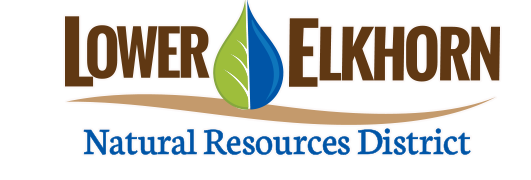Efficient irrigation management can help reduce nutrient leaching
/Irrigation and nutrient management tools can be used to improve yields, conserve energy and water, and reduce nutrient leaching to protect our groundwater.
“One way to improve irrigation efficiency is to implement soil moisture sensor technology into your operation,” said Curt Becker, Projects Manager for the Lower Elkhorn Natural Resources District (LENRD). “The soil moisture data recorded by the sensors will show changes over time and will support producers’ decisions, to only irrigate when necessary, during wet or dry times,” said Becker.
Soil moisture sensors measure the amount of water in the soil profile. These sensors are placed at predetermined locations and depths in the field and are effective management tools to help decide when and when not to irrigate. The goal with using soil moisture sensors for in-season irrigation management is to only apply what the crop needs, while leaving storage space in the soil profile to capture precipitation.
Becker said, “It’s important to leave some room in the soil profile for rainfall. Rainfall can push nitrogen through the soil profile much easier when the soil profile is saturated. You don’t want to dry out the profile, but there is a happy medium that doesn’t affect your yield and allows room for rain.”
Excess irrigation can potentially cause further nitrate leaching, and according to recent information collected by the University of Nebraska the penalty is 5-8 lbs. of nitrogen loss per inch of root zone drainage. This amount can go up or down depending on soil-type, available nutrients, and precipitation.
The LENRD has 50% cost-share available to help producers wanting to purchase soil moisture probes.
Chemigation is another beneficial management tool that can help growers with the timing and placement of the nutrients on their crops. By utilizing the irrigation application equipment as the delivery mechanism, this program is designed to spoon-feed fertilizer to the crop at the right time, reducing fertilizer losses and the risk of nitrogen leaching to the groundwater. It also eliminates the need for additional passes over the field with fertilizer application equipment, which prevents soil compaction and saves valuable fuel and maintenance cost on equipment.
The LENRD has financial assistance available for landowners or farm operators who have not previously engaged in the chemigation/fertigation program. Becker continued, “This program introduces landowners to and provides a one-time cost-assistance for equipment needed for chemigation (split applications) of fertilizer through irrigation systems.”
Another benefit of chemigation is that, in most cases, materials can be applied regardless of weather or field conditions. Eligible components for the 50% cost-share include the mainline check valve, fertilizer injection pump, and/or the chemical injection valve.
Another way we can carefully manage the impact that various practices have on the land and water is through deep soil sampling. Becker explained, “This practice can help producers account for the nitrogen already available within the soil profile.”
Soil samples that are used to determine fertilizer application rates usually come from the top 4 to 8 inches. However, there are times when deep soil sampling is beneficial and necessary, especially in a nitrogen management program. Deep soil sampling (24 to 36 inches) can monitor the movement of nitrogen below the topsoil.
Deep soil sampling can also verify if any residual nitrate is available. Becker concluded, “With fertilizer prices increasing, this practice is one thing farmers can do to help reduce nitrogen costs. The results of these soil tests can be used to offset some of the nitrogen applied during the next growing season and minimize environmental impacts, as we all work together to preserve water quality.”
Multiple years of data is critical when interpreting the long-term trends in your field. The LENRD can work with producers to share up to 50% of costs associated with this practice.
Variable rate irrigation (VRI) is also used to assist in protecting our groundwater. This innovative technology enables a producer to tailor water application to varying crop needs across the field. Most fields are not uniform because of natural variations in soil type and topography.
Becker said, “When water is applied uniformly to a field, some areas may be overwatered, while other areas of the same field may be too dry. VRI technology gives irrigators an automated method to vary rates on the individual management zones within a field. Using this technology can help reduce irrigation withdrawals, while still maintaining a well-irrigated crop. This allows for more efficient use of water, which is always important, but even more so in times of drought.”
Some of the benefits of adapting a VRI system include increased crop yields, less leaching and runoff of applied nutrients, and disease problems can be reduced by eliminating over-application when irrigation systems overlap.
The LENRD has 50% cost-share available to assist producers with establishing a VRI system. Interested? Contact the LENRD office in Norfolk today or visit your local Natural Resources Conservation Service (NRCS) office for more information or to apply.

